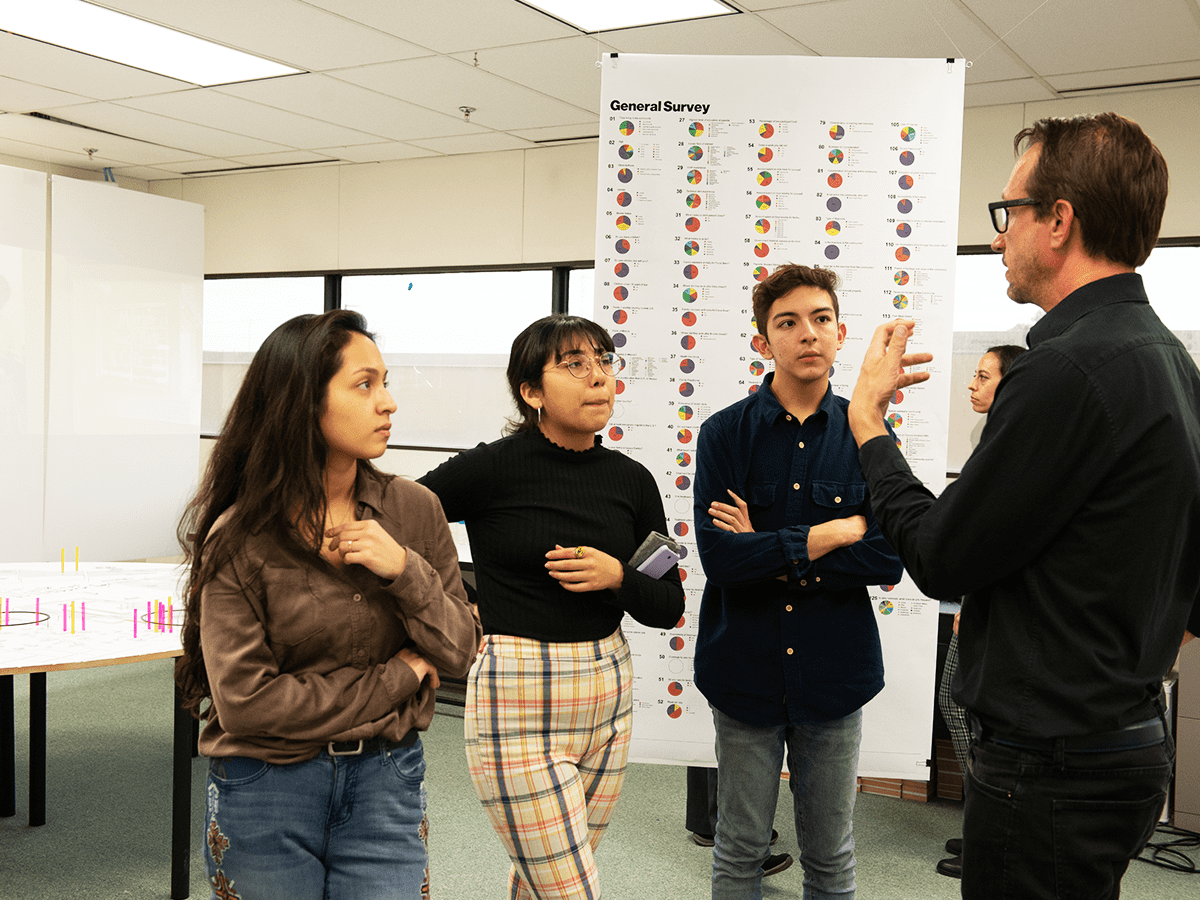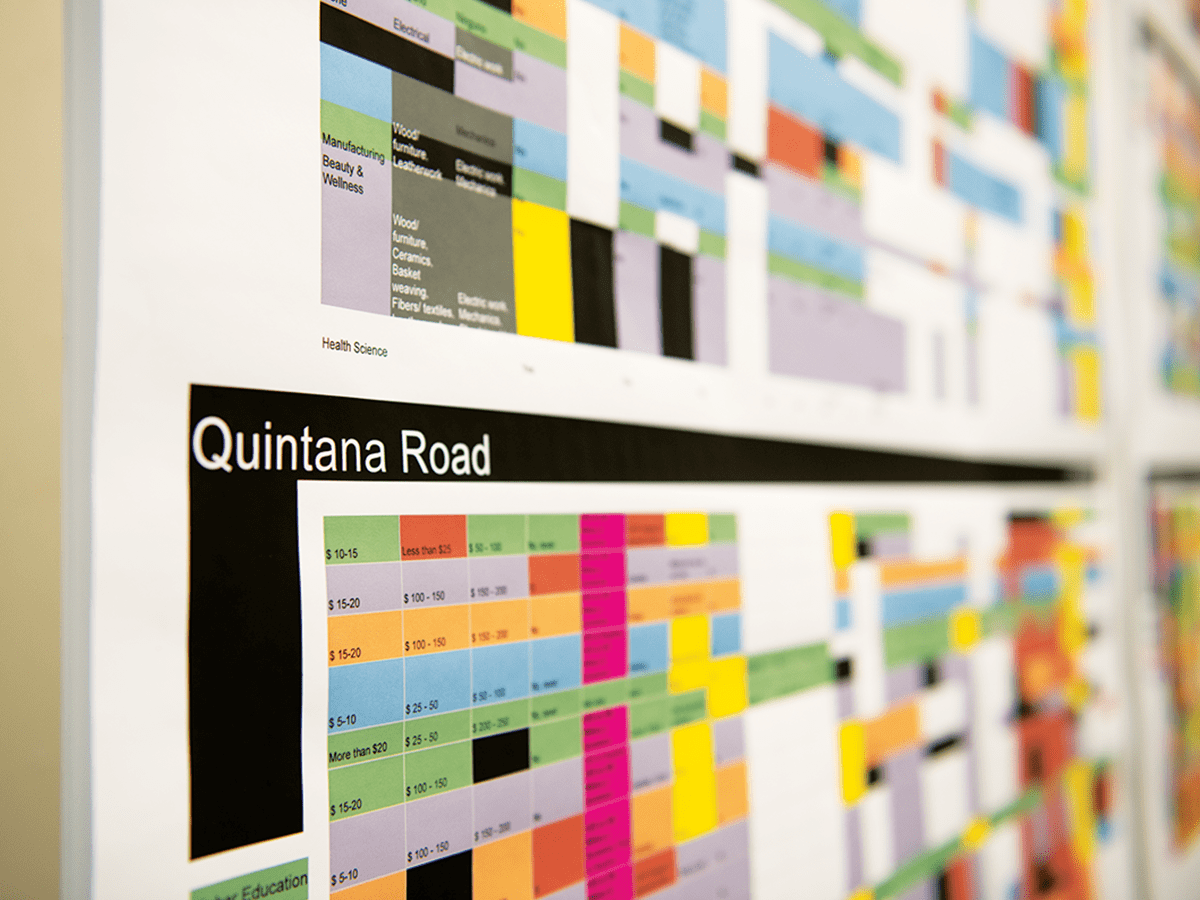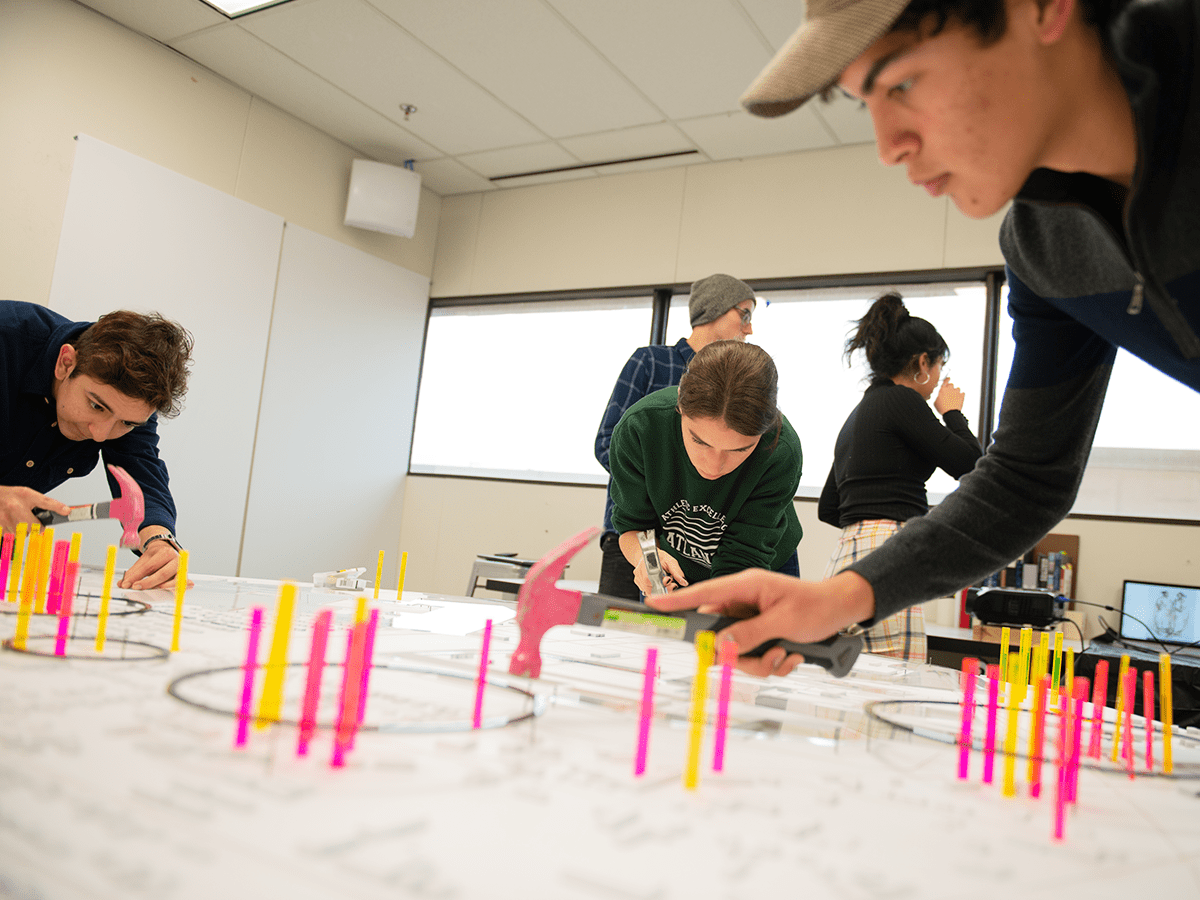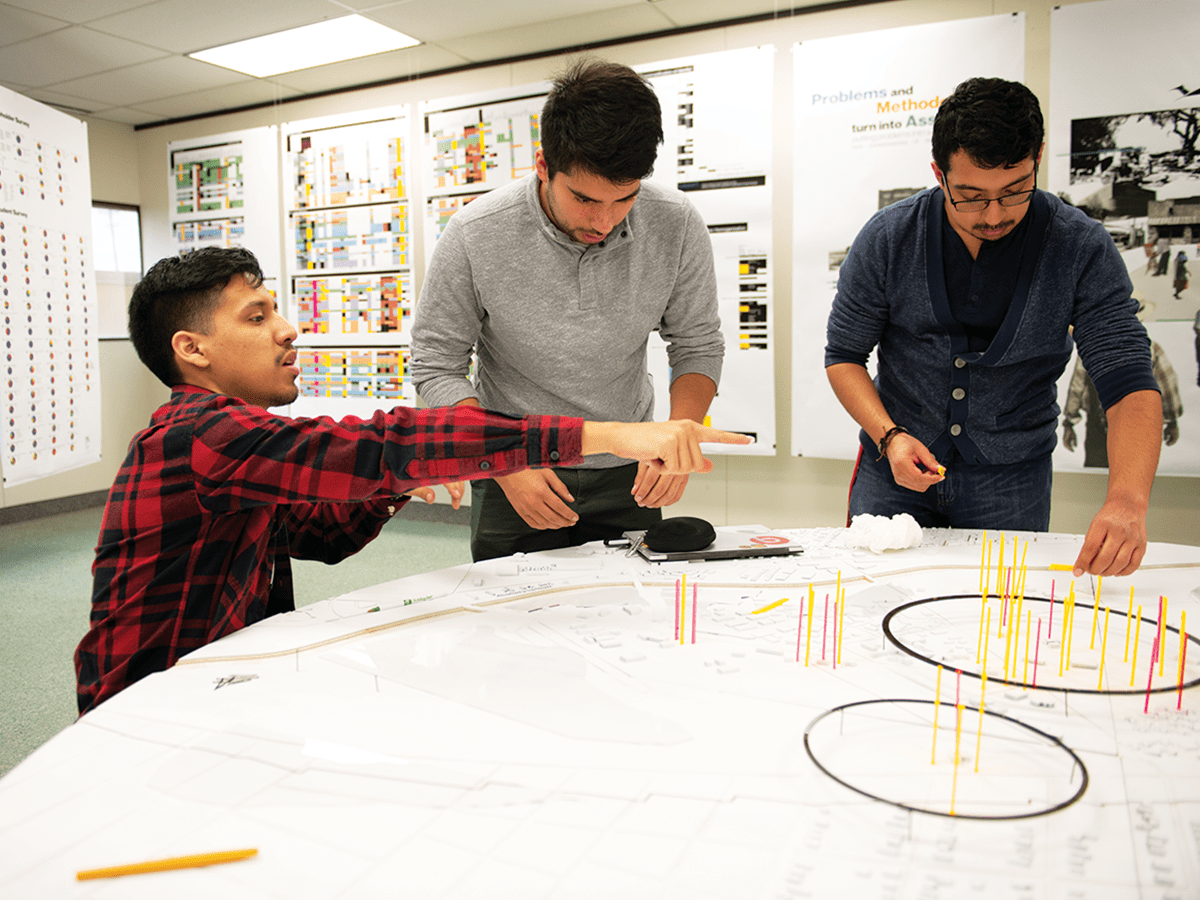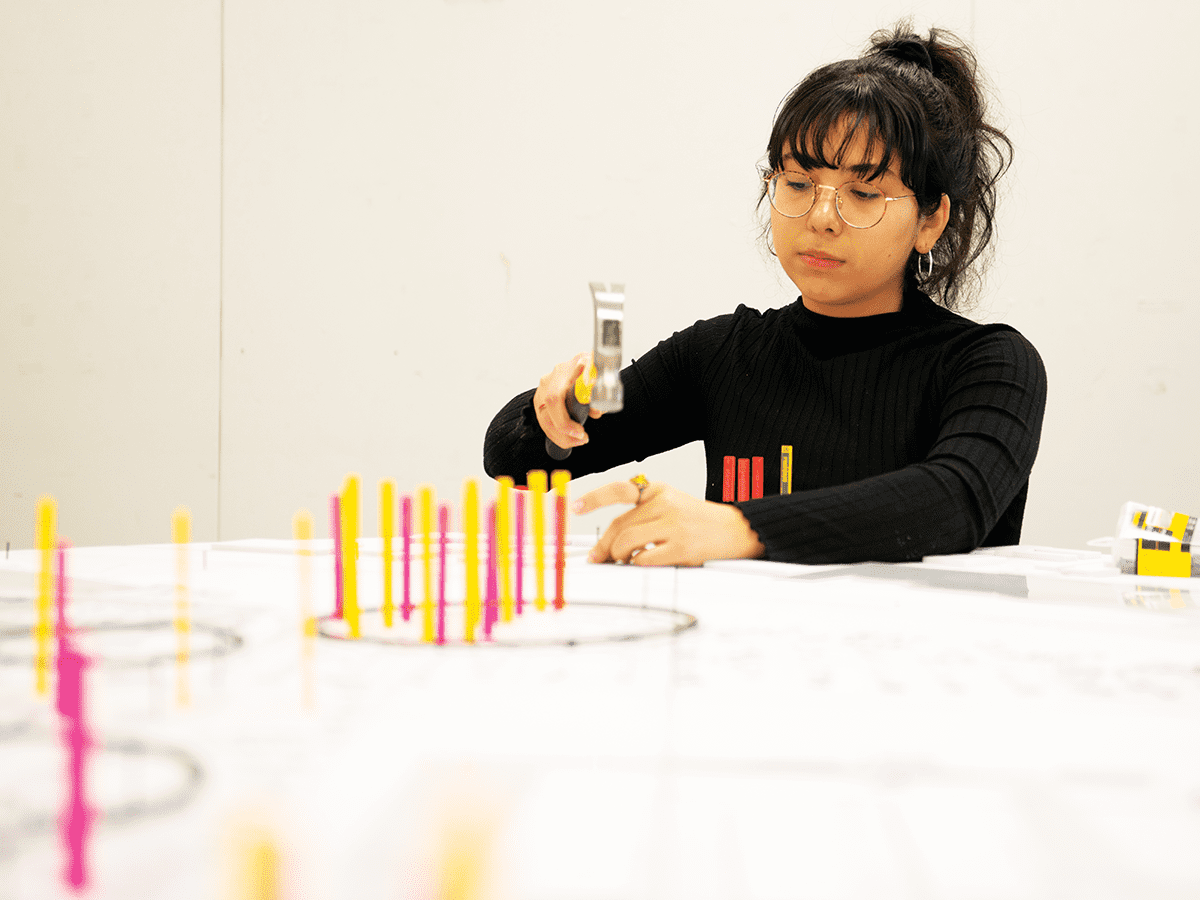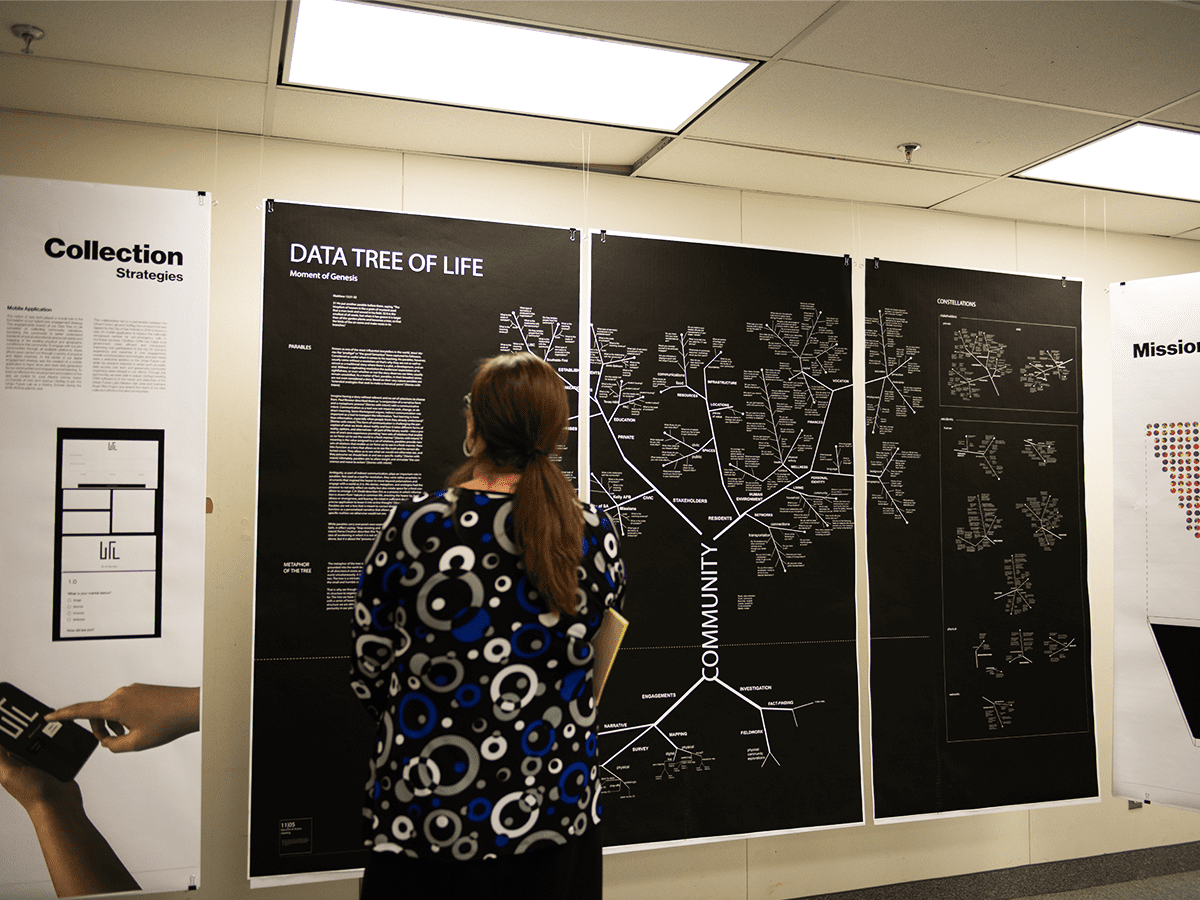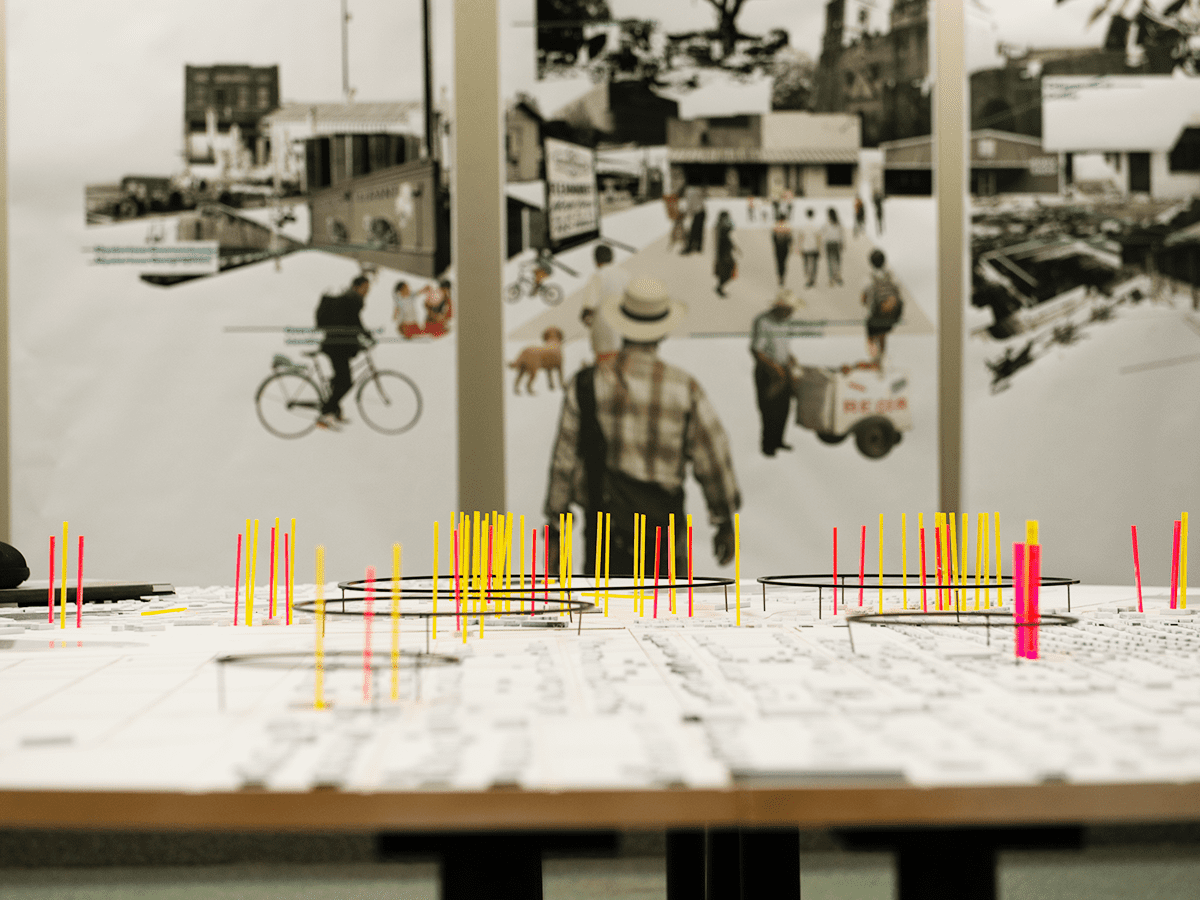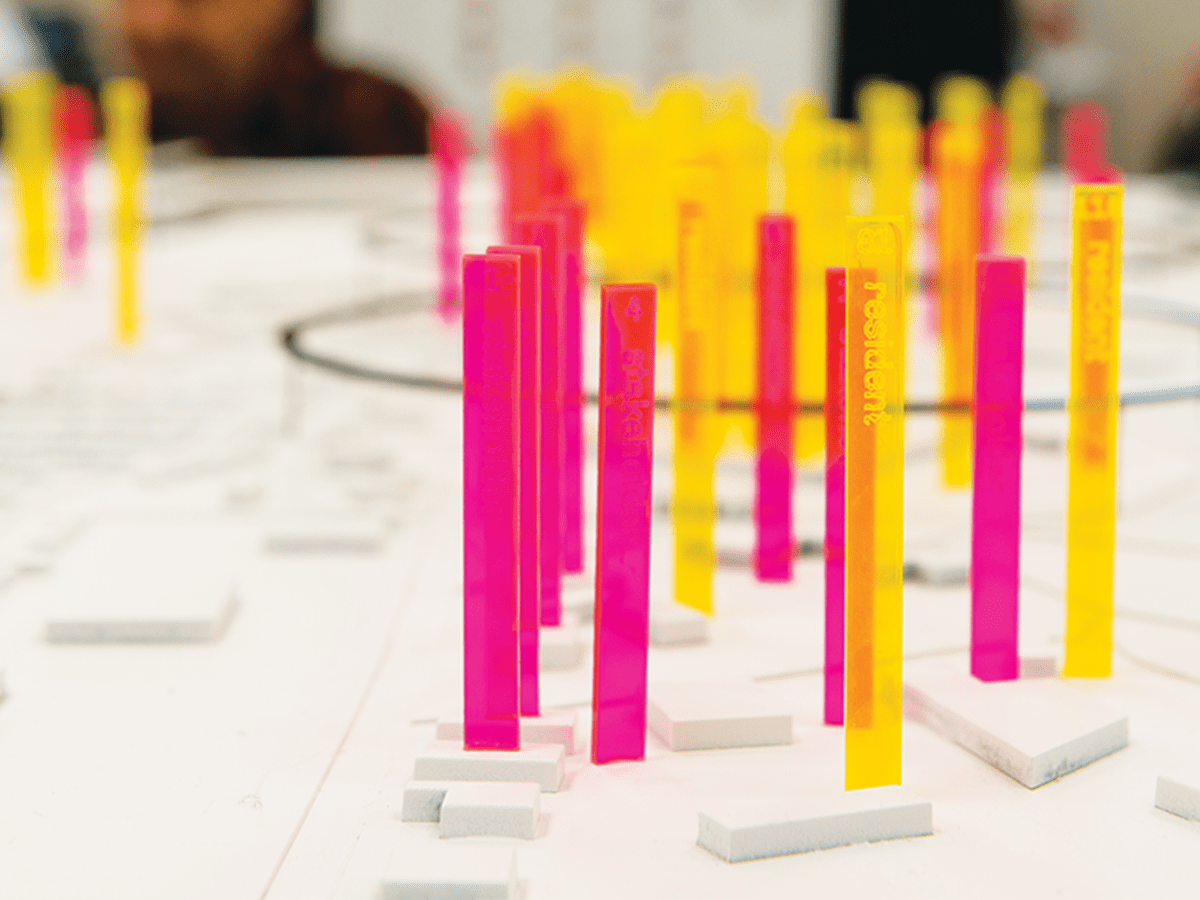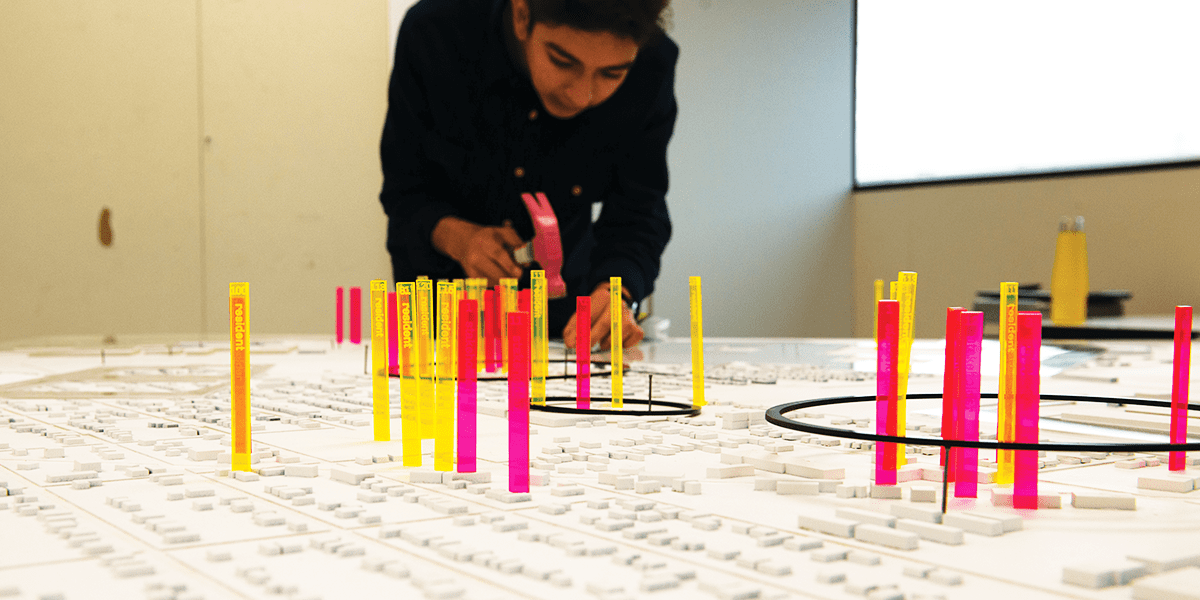
Think & Do
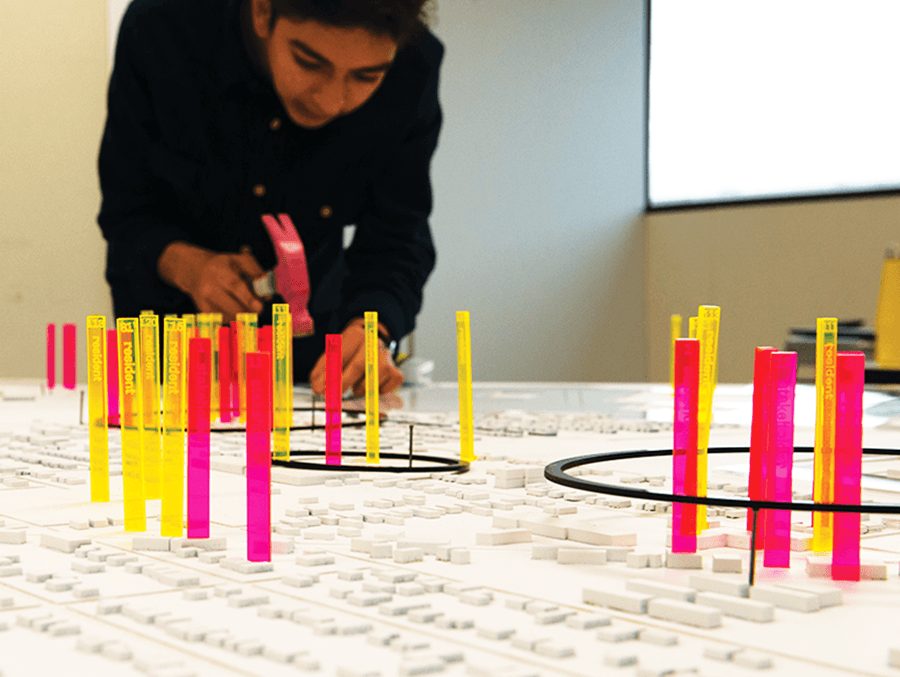
Getting ready for an end-of-semester exhibition late last year, architecture students in professor Antonio Petrov’s Urban Future Lab busied themselves with last-minute details. There was a projector to set up, pieces needed to be attached to models of two south side San Antonio neighborhoods, and the wealth of information on panels hanging from the ceiling required a review.
One of the students, senior Azelya Alvarez, was born and raised on San Antonio’s south side, but she says she didn’t expect to see her community in a whole new light before she became involved in the project that researched the Mission San Jose and Quintana neighborhoods. “For me, this project was quite personal,” Alvarez says. “The Quintana Road neighborhood is where I grew up. I’m familiar with all of this. But then, at the end, I realized maybe I don’t know as much as I thought about where I came from. I really learned a lot.”
The Urban Future Lab collaborated with the Southside First Economic Development Council, local tech startup Cityflag, and Local Initiatives Support Corp. to research the economic past and present of the communities to help bring revitalization in the future. The Mission San Jose and Quintana neighborhoods are two of the lowest income communities in the city, existing in proximity to major economic entities.
The exhibit was a culmination of a year and a half of work that created whole new data sets for the neighborhoods. One discovery was that the neighborhoods have a cash-based economy that mirrors that of the Rio Grande Valley more than it does its neighboring north side of San Antonio. Just one detail like that can change the way revitalization and development comes into a neighborhood, Petrov says. “At the Urban Future Lab we care about how visions translate into values, responsibilities, and collective aspirations to catalyze new inquiries and the mechanisms necessary to deliver them. This has been a long process and we listened to the community. The trust we’ve developed is remarkable, and it made all of this possible.”
Life Transforming Experience
UTSA helps its students create their future by providing an immersive educational experience. The university’s goal is to have, by 2028, at least 75% of all students participating in hands-on research and engagement. Just as important as students gaining life-changing proficiency, these opportunities enable every participant to have an impact on the lives of others as they take on projects not just locally but globally. Here, Sombrilla Magazine explores some of these endeavors and how they are transformational for Roadrunners.
Related Articles
Submersed in San Antonio
Citymester takes utsa students out of the classroom to help solve civic issues.
Citymester Trifecta
Three steps to ensure a strong real-world experience.
With a Critical Eye
Transdisciplinary research efforts help to shed insight on criminal cases gone cold.
Giving Voice
A new effort aims to expand military history through the stories of women veterans.
Sending a Message
UTSA’s professional writing scholars get hands-on experience with real clients.
When All’s Right at Home
Research is uncovering insights to help local homeowners with legal problems.
Petrov has directed the Urban Future Lab for two years within the College of Architecture, Construction and Planning. The interdisciplinary lab functions as a think-and-do tank and as a teaching laboratory that calls for action through research and public interest design to address challenges of contemporary urbanization reshaping the future of San Antonio and the region.
Students in the lab have done an extensive amount of research, including presenting to the public information on the Broadway Avenue corridor, partnering with the Witte Museum for tricentennial exhibits, and amassing a whole new data set on the Quintana and Mission San Jose neighborhoods as part of the south side pilot project. This project was featured at the 2018 International Downtown Association’s annual conference and tradeshow, “Retropolitan: The New American City,” which was hosted in collaboration with Centro San Antonio. In addition, the project was the subject of a featured article and cover of the San Antonio Business Journal, an article in the Rivard Report, and a feature by KSAT TV.
The Urban Future Lab is also an example of the push to create experiential learning opportunities for students to work within the community and get experience in their chosen field. That kind of learning is all a part of President Taylor Eighmy’s classroom-to-career initiative. The initiative will drive UTSA’s institutional goal to have 75% of students graduate with some form of experiential learning.
“I believe that experiential learning opportunities can greatly enhance classroom instruction and have a profound impact on student learning outcomes,” Eighmy says. “These signature learning experiences—including internships, service learning, undergraduate research, and study abroad—directly contribute to a student’s success in college and in his or her chosen career.”
Senior architecture major Ana Vasquez joined the Urban Future Lab because she wanted something outside the traditional architecture classroom framework. “I got frustrated with architecture that seemed self-serving,” she says, “and wanted a method more grounded in the real world with real people.” The experience of going out into the community, not once or twice but over and over again, she says, helped her understand how architecture and the role of architects can be rooted within a community.
Challenges facing the future are significant, Petrov explains. “Globalization and rapid urbanization have widened the territory, and inquiries have become more complex and broader in scope. The proliferation of misinformation, climate change, environmental damage, demographic shifts, and global inequality have further increased the stakes for architecture, institutions, and the knowledge economy. In question are the ways we respond to the inflections the world is undergoing. At stake is the imbalance between global currents and local particularities––it seems as if one system is functioning on top of the other–and the policies that shape these conditions.”
Petrov argues for a recasting of teaching methodologies. More than ever, he says, it is about identifying institutional blind spots in learning, research, policy, and execution to safeguard the environmental trust. “Rather than continuing to float between new definitions of the problem, it is urgent to determine the scope of finding solutions,” he says. “At the Urban Future Lab we believe in active engagement, inside and outside of the classroom. As a result we care about how visions translate into values, responsibilities, and collective aspirations to catalyze new inquiries and the mechanisms necessary to deliver them. We are passionate about these opportunities and how they thrive at the intersection of the university and its local and global communities.”


